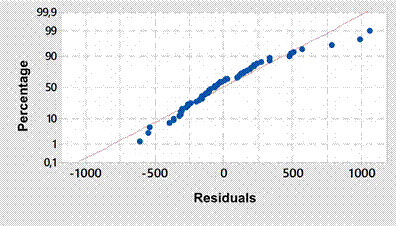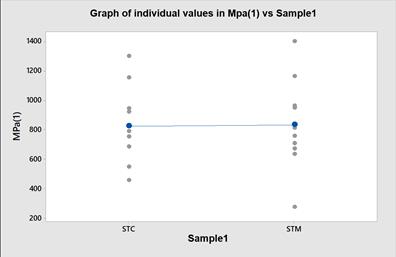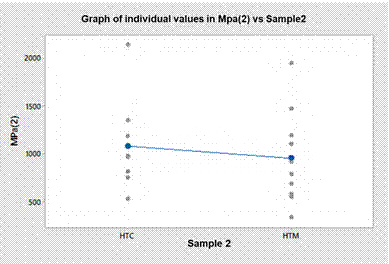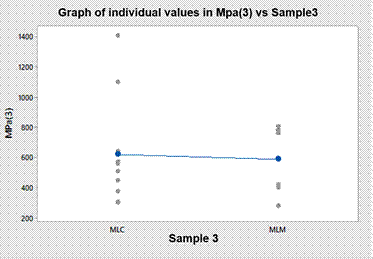INTRODUCTION
Fixed partial prostheses (FPP) are used to replace missing teeth. Historically, gold was considered the best prosthetic material, but in 1789 Martin H. Klaproth discovered zirconium, and in 1990 zirconium dioxide (zirconia) started to be used as filling material for composite resins, implant abutments, intra-radicular retainers, FPP substructures, and single crowns.1
In nature, zirconium is a bright, malleable, greyish material. Its flexural strength is about 1,000 MPa, with a Young’s modulus of 200 GPa, Vickers hardness of 200 MPa, and melting temperature of 1,855°C.2 It is obtained as a zirconium powder that must be processed to eliminate impurities, mostly hafnium oxide (HFO2) because it is very similar to zirconia and according to the 133- 56 ISO Standard, only less than 5% is allowed.
During this procedure, aluminum dioxide is added to improve mechanical properties and reduce hydrothermal degradation. The compaction process is done by one of two techniques at 1,000 kg x cm:2 the uniaxial pressing technique that consists of introducing zirconium powder in a mold to be compacted in only one direction, while in the isostatic pressing technique the material is compacted in various directions. Using the isostatic technique, the material’s linear shrinkage is eliminated, but its cost is higher.3
The crystalline phases of zirconia are directly related to thermic changes. The monoclinic phases are found at room temperature or less than 1,170°C; the tetragonal phase is stable at 1,170°C-2,370°C, and the cubic phase is stable at temperatures over 2,370°C. Three generations of zirconia materials have been developed. The first generation is partially stabilized zirconia, which was used 15 years ago for FPP substructures; it has a high refraction index that yields opacity, and its flexural strength is 1,000- 1,200 MPa, indicated for single crowns, 4-unit FPP and free ends FPP. To improve optical properties, the second generation of zirconia was developed in 2012-2013, with the same strength and indications but with aluminum dioxide grains redistributed by the infiltration technique. To further improve optical properties, the third generation of fully stabilized zirconia was launched in 2015 with two mixed phases (tetragonal and cubic); it was more translucent and eliminated hydrothermal degradation. Its flexural strength is 550-650 MPa and is indicated for single crowns, veneers, inlays, onlays and anterior FPP. It is manipulated by 3D stratification or multilayer.4
Sintering is the final treatment of zirconium dioxide. Hummler defines this process as the transportation of a thermal mass that reinforces the particles among them and/or changes their porosity and geometry, coupled with free energy reduction.5 This process takes 8 hours in conventional ovens but this time is reduced to 3 hours in the latest generation ovens.
Stawarczyk et al6 determined the effect of sintering temperature on the flexural strength, contrast relationship and grain size of zirconia, using a three-point test of resistance. They concluded that the ideal range of sintering temperature is 1,500°C-1,550°C and that if temperature is increased over 1,700°C the mechanic properties are abruptly reduced, although esthetic properties are improved.
Jenni Hjerppe et al7 evaluated the effect of different surface treatments on the flexural strength of zirconia at a temperature of 1,500°C in a fast sintering oven (3 hours).
They did not find statistically significant changes in mechanical properties.
Sedda et al8 used a Zircomat T® oven for 8 hours (conventional sintering) and did not find differences in the mechanical properties either.
Dahl et al9 used two sintering techniques and measured Vickers hardness and flexural strength but found no differences.
The goal of selecting a fast sintering technique is to reduce working time. Therefore, the objective of the present study was to compare the flexural strength of sheets manufactured in 3 kinds of zirconium dioxide using two sintering times, measured on a universal testing machine.
METHOD
The protocol of this study was evaluated by the Institutional Ethics Committee and approved as a study with no risk according to Resolution 8430 of 1993.
The calculated sample size was 9 sheets per subgroup, but to increase reliability, 10 sheets were used per subgroup, for a total of 60 sheets distributed into two groups: 30 for conventional sintering and 30 for fast sintering. Each group was distributed in 3 subgroups: 10 HT sheets; 10 ST translucent sheets and 10 ML sheets.
Three zirconium dioxide disks were prepared with Upcera®, ST:1200 MPa, ML:600 MPa and HT:1200 MPa; using the Isomet® cutting device of the UniCIEO biomaterials laboratory, 60 sheets of 2 mm thick, 5 mm width x 37 mm length were prepared. Sheets were measured with a Mitutoyo® digital micrometer.
The sheets were dried in a Zirkonzahn® lamp for 1 hour and then subjected to sintering either in the Zircomat T® conventional oven for 8 hours at 1,530°C, or Zircomat 6000 MS® oven for 3 hours at 1,530°C, at the Eurodent Dental Academy in Bogotá.
Flexural strength was measured on an Instrom® 3366 universal testing machine, applying the three-point test, which consists of 2 fixed points to sustain the sheets and a central point to apply force. The results in Newton (N) were converted to MPa, using the formula indicated by the 6872: 2008 ISO standard:10 MPa = 3Nl / 2bd2, where MPa = Fracture strength in MegaPascal, N = Fracture load, I = distance between support points, b = width, and d = thickness.
The statistical analysis was performed using the Minitabs 18 software. Normality of distribution was tested by a graph, and comparisons were made by ANOVA and t test.
RESULTS
Figure 1 shows that data distribution is normal, and therefore parametric tests are applicable.
The analysis of variance shows that flexural strength is not statistically different when sintering times are compared (p = 0.6 > 0,05). The difference between materials is significant (p = 0.003). The interaction of the two variables (oven x material) is not significant (p = 0.836).
The t test for ST material between ovens shows that the difference in flexural strength is not statistically significant (p > 0,05). Figure 2 shows that both averages are almost identical.
Figure 3 shows similar flexural strength averages in the two sintering groups.
The t test for the ML material between ovens shows no statistically significant difference (p > 0,05).
DISCUSSION
The results of the present study clearly show that there are no significant differences in flexural strength between the materials, regarding sintering procedures. However, the difference between materials is significant as expected because the selected materials had different properties.
Both averages are higher than the values reported by the manufacturer. This can be explained because the manufacturer does not indicate the test used, while the present study followed the 6872: 2008 ISO Standard.
Starwarcy et al6 studied the sintering techniques considering the hypothesis that the mechanical and optical properties could be altered by temperature changes occurring during the processing of zirconium dioxide. They found out that the best range of temperatures was 1,500°C-1,550°C, with no significant difference in mechanical properties after sintering, in agreement with the results of the present study.
Starwarcy et al11 also studied the effect of sintering temperatures on the esthetic properties, concluding that the last generation zirconia is more translucid. This property is inversely proportional to the mechanical properties. Therefore, it is important to consider the esthetic requirements of each restoration. In the present study, the translucid property of zirconia was not assessed, but it is known that there is a direct correlation between optical properties and temperature.
Sedda et al8 studied the effect of shading processes on the flexural strength of zirconia blocks. They obtained results for flexural strength in pre-shaded zirconia blocks under neutral, slight, medium or intensive infiltration, finding out that there are no statistically significant differences in flexural strength in the presence of a fast sintering process. The reported values are similar to those obtained in the present study.
In a study measuring density and other zirconium properties after two different sintering procedures (fast and conventional), Dahl et al9 found no difference in Vickers hardness or flexural strength, also agreeing with the present results.
It is recommended for future studies to compare the flexural strength of other kinds of zirconia and to compare the mechanical behavior of zirconia with different optical properties.



